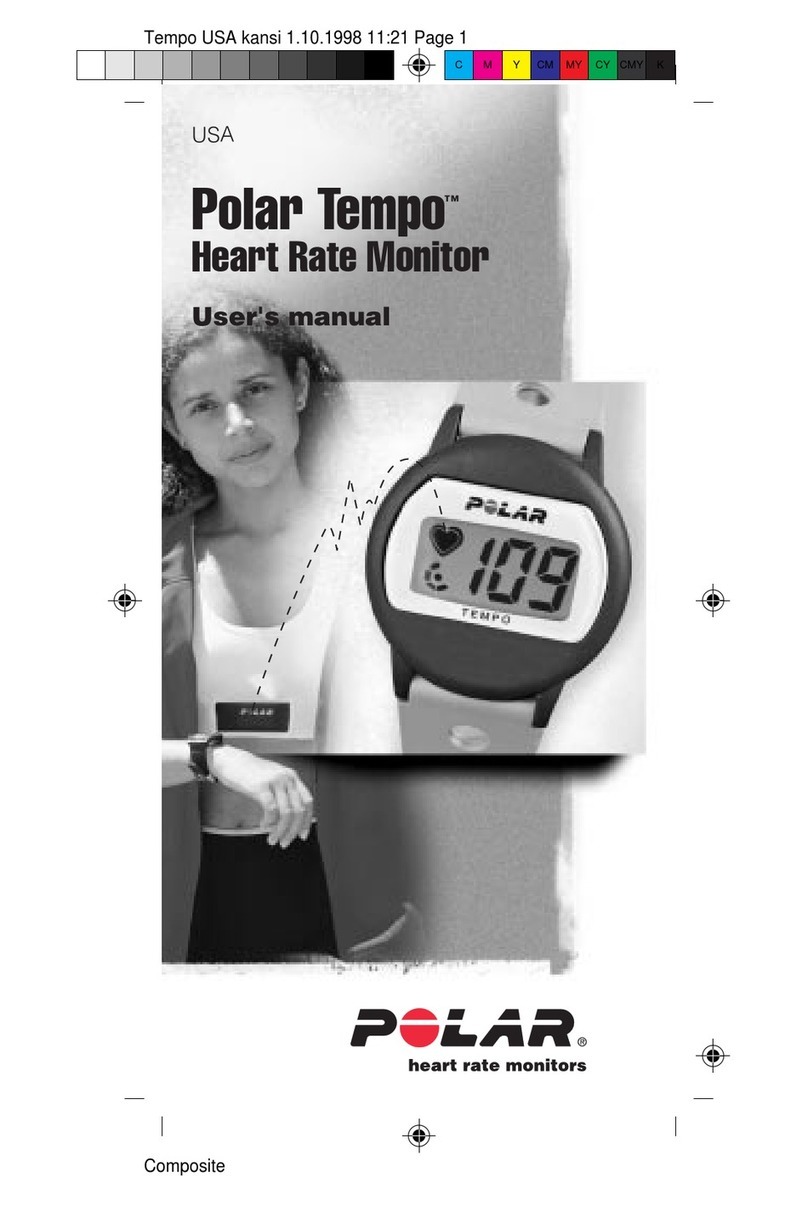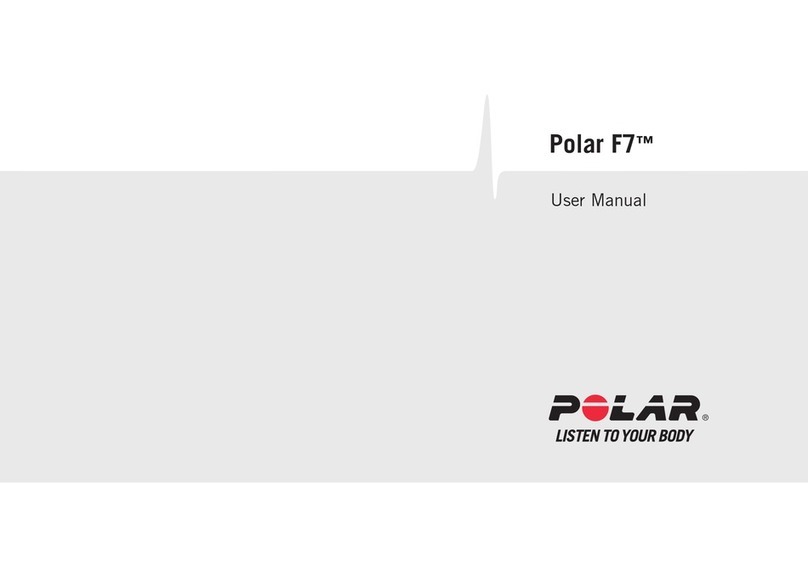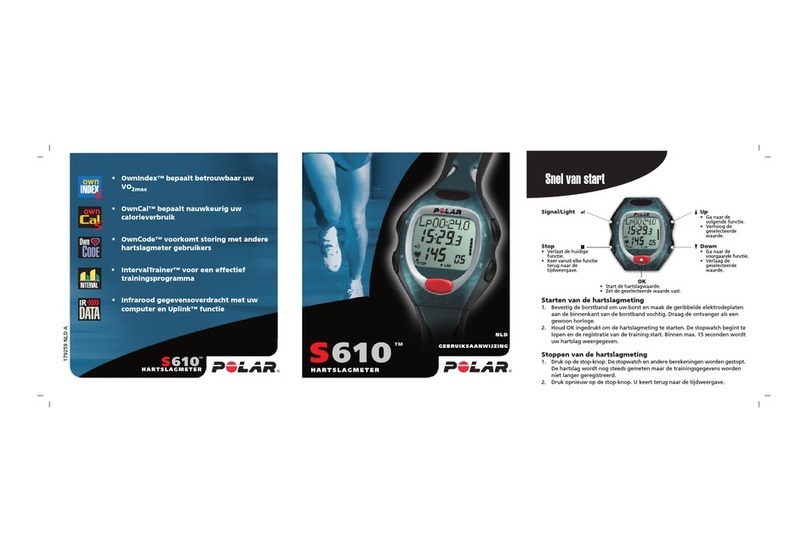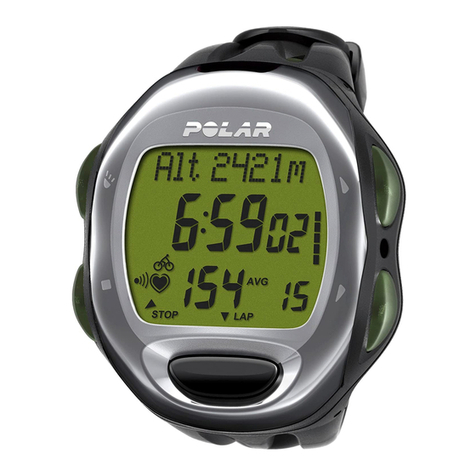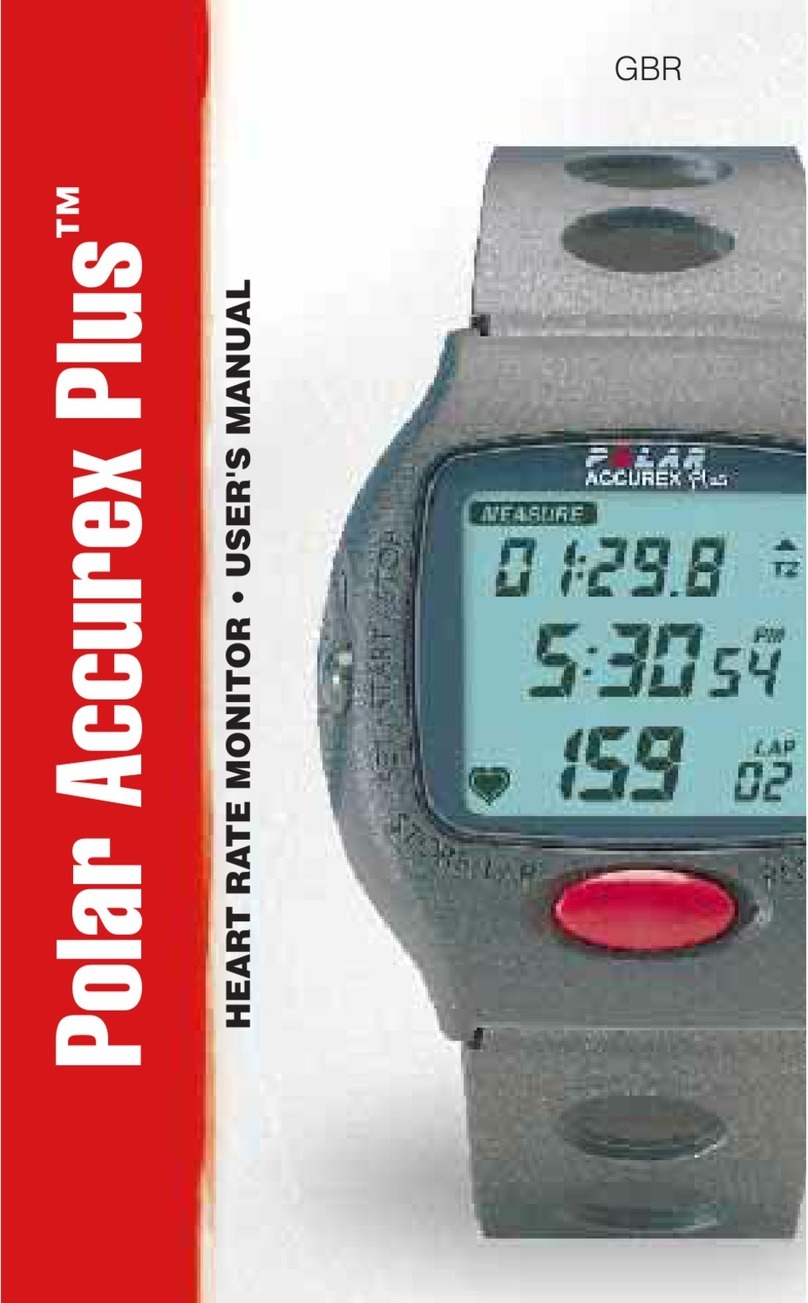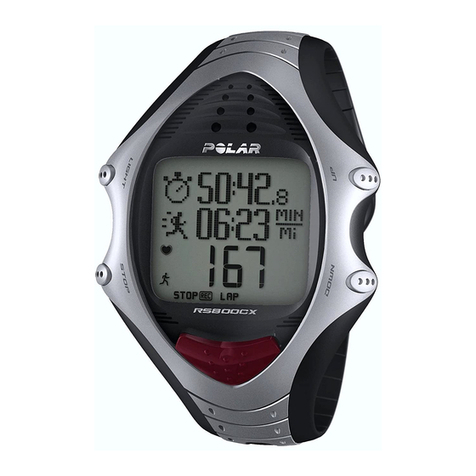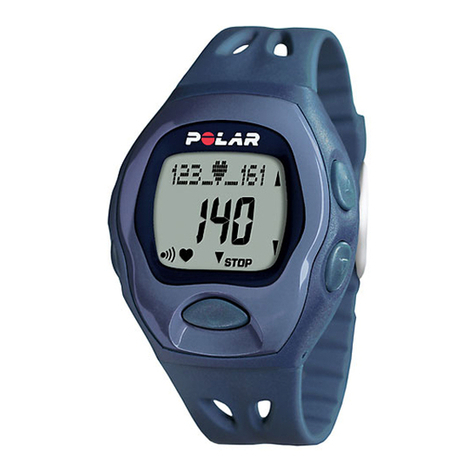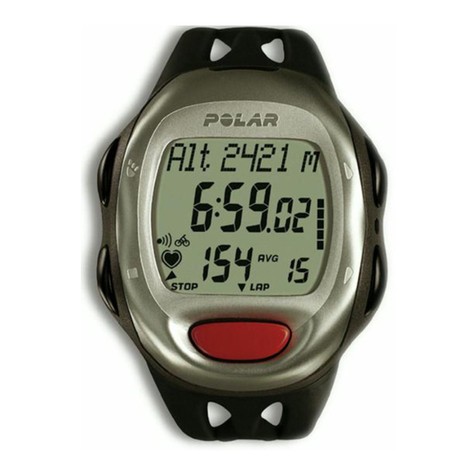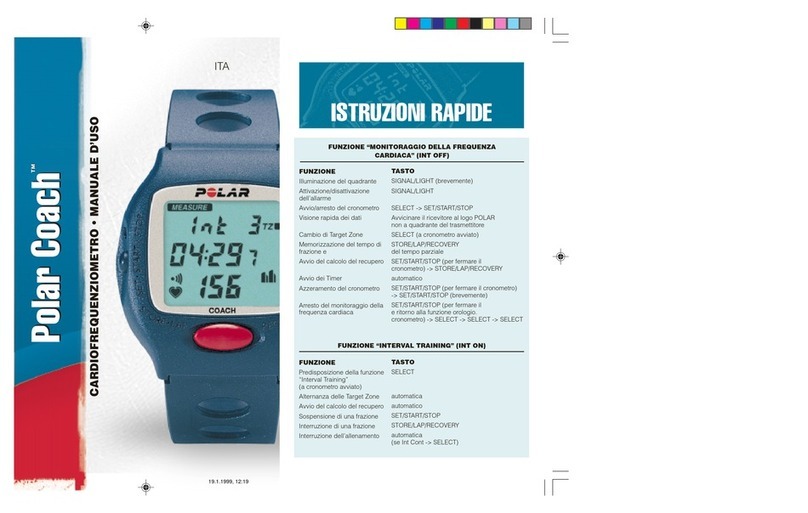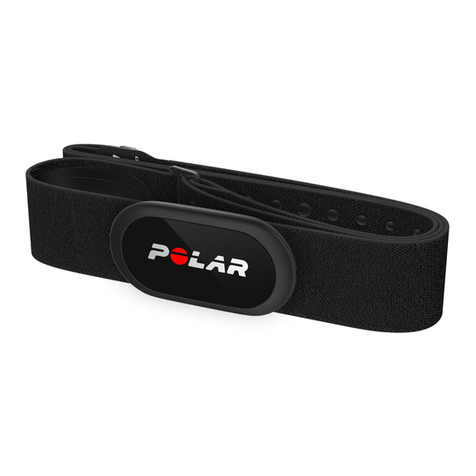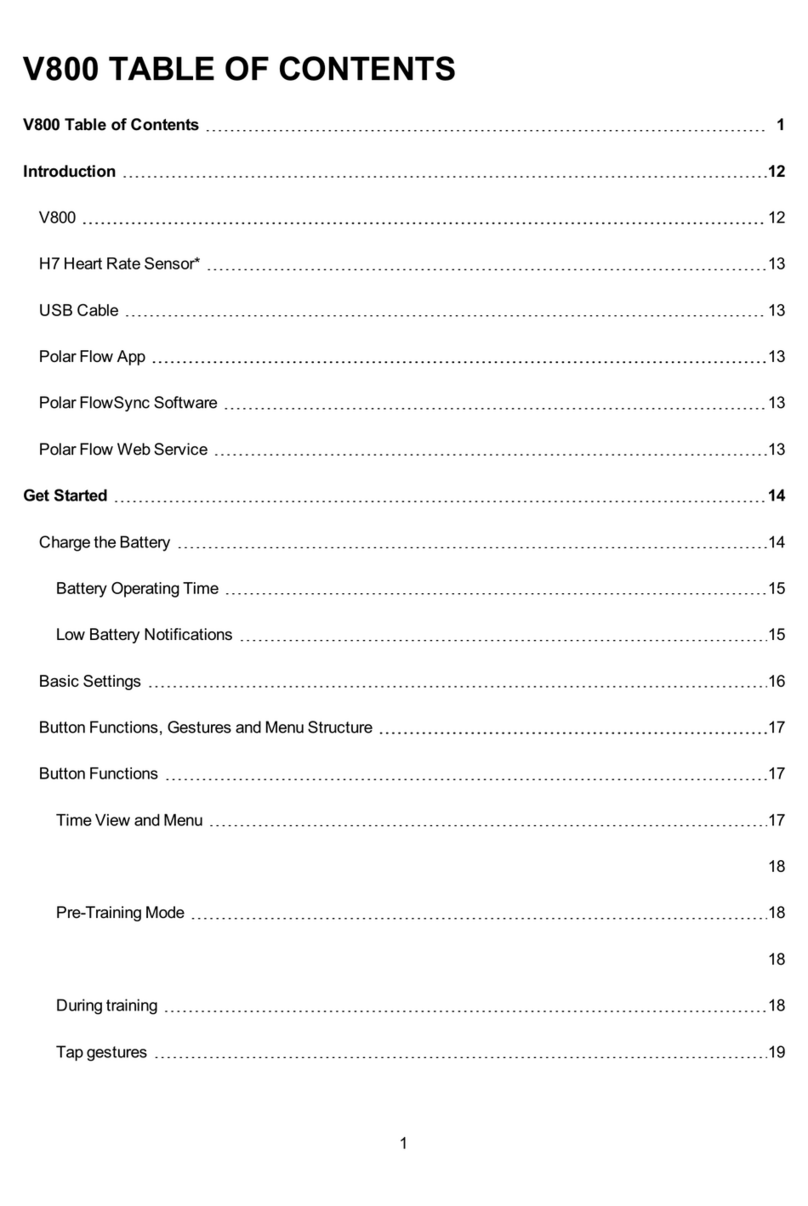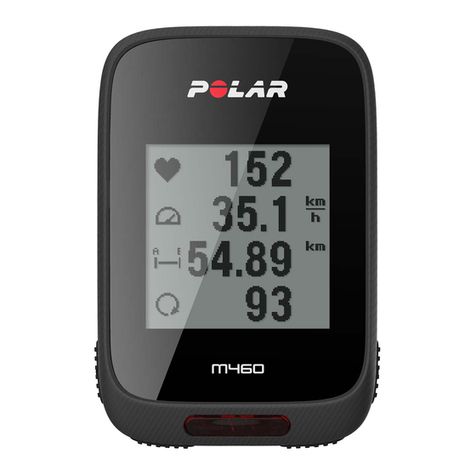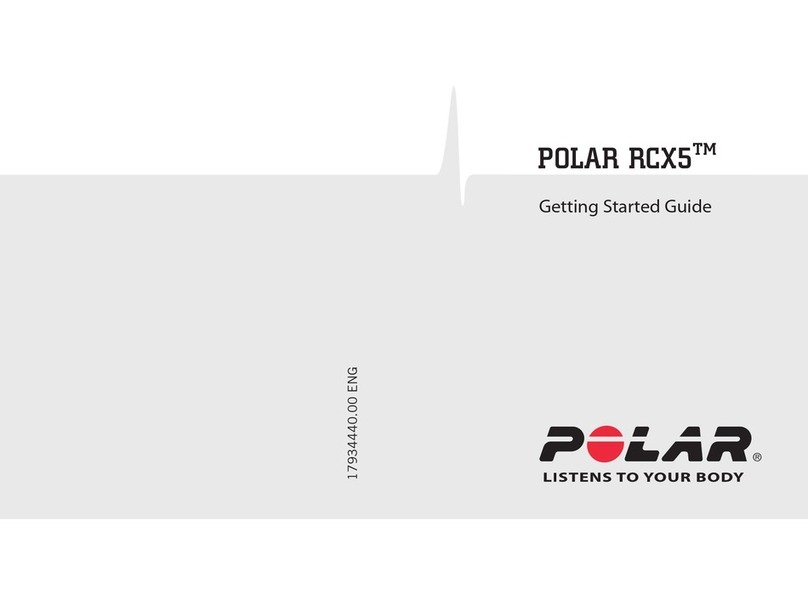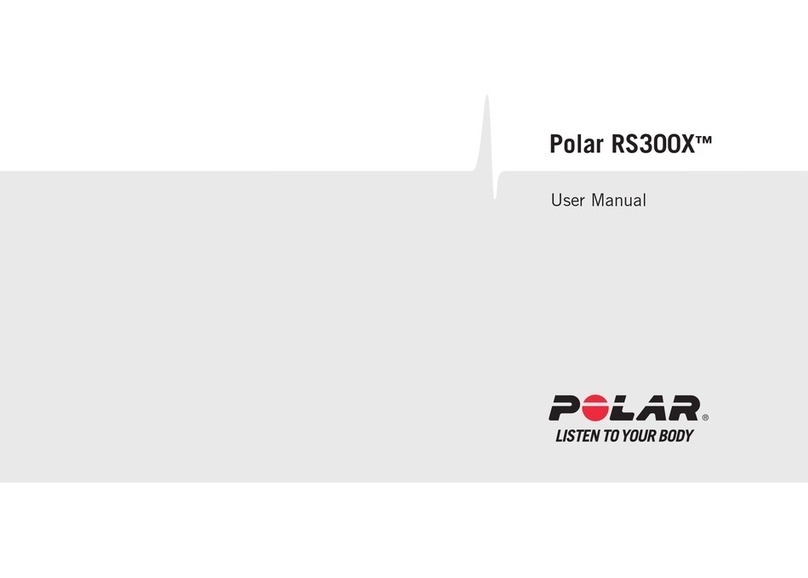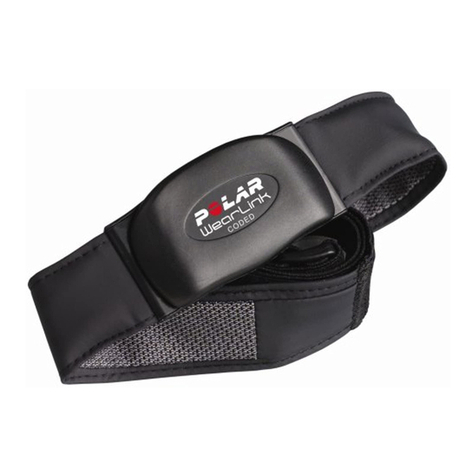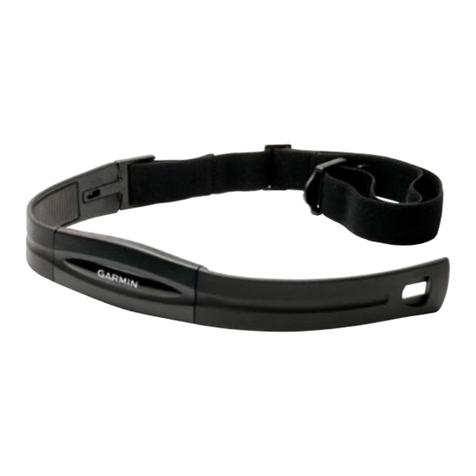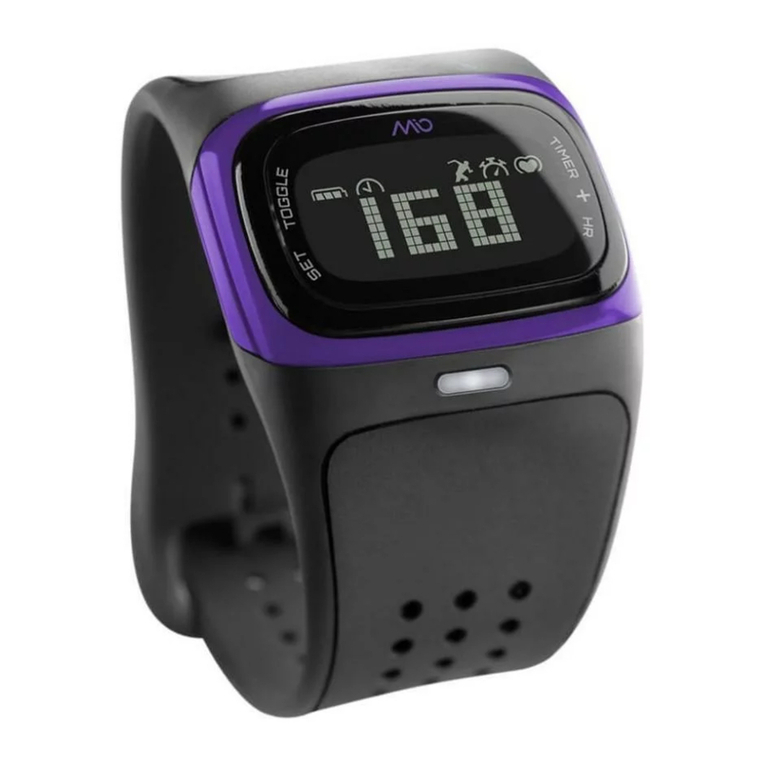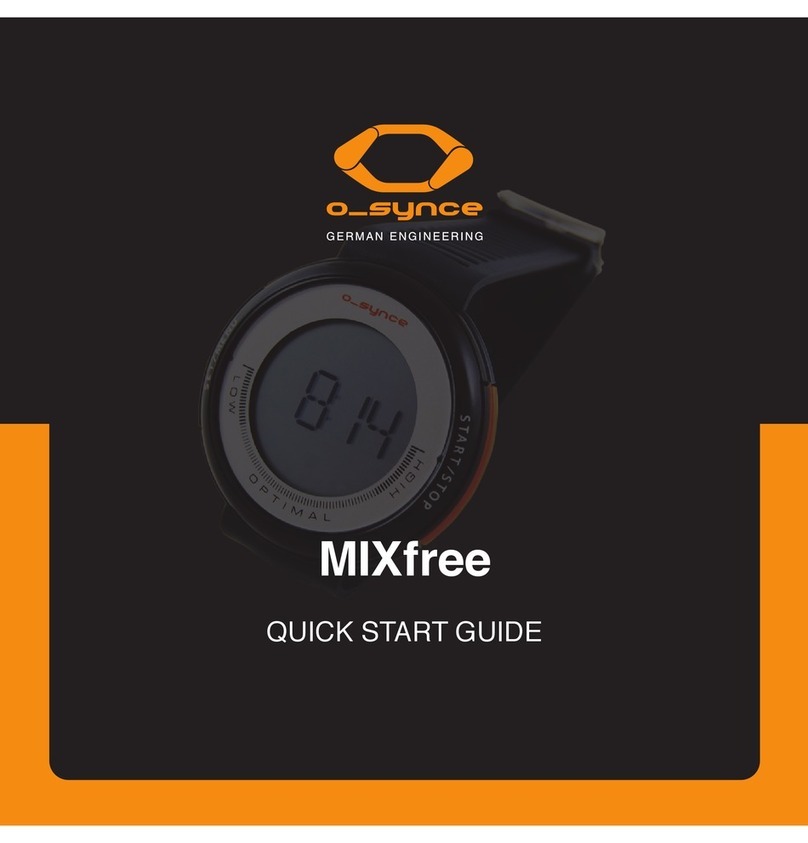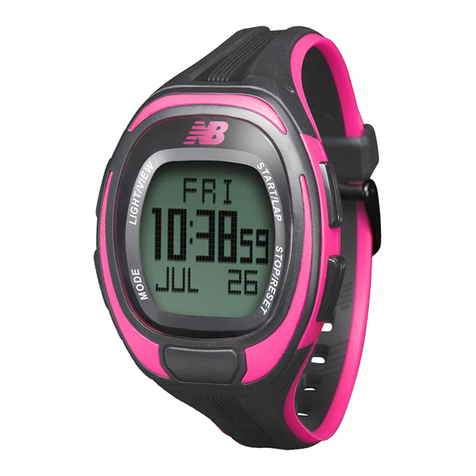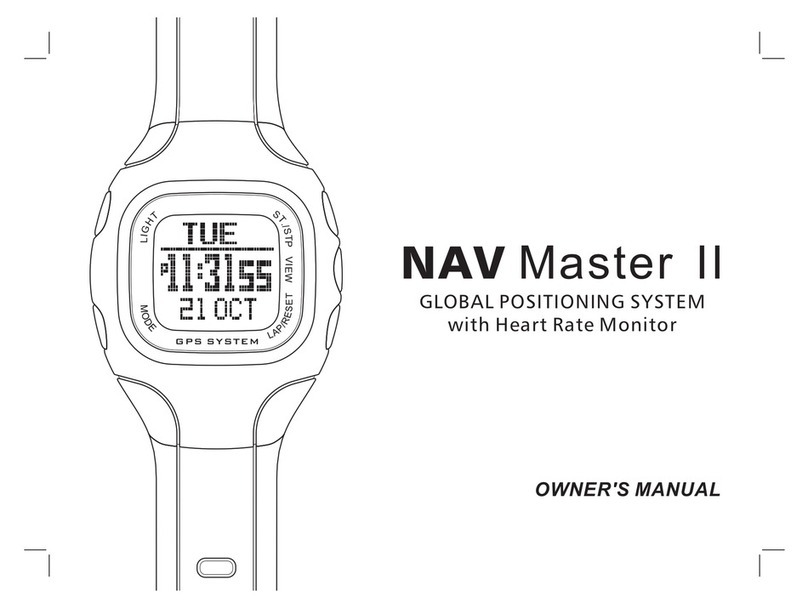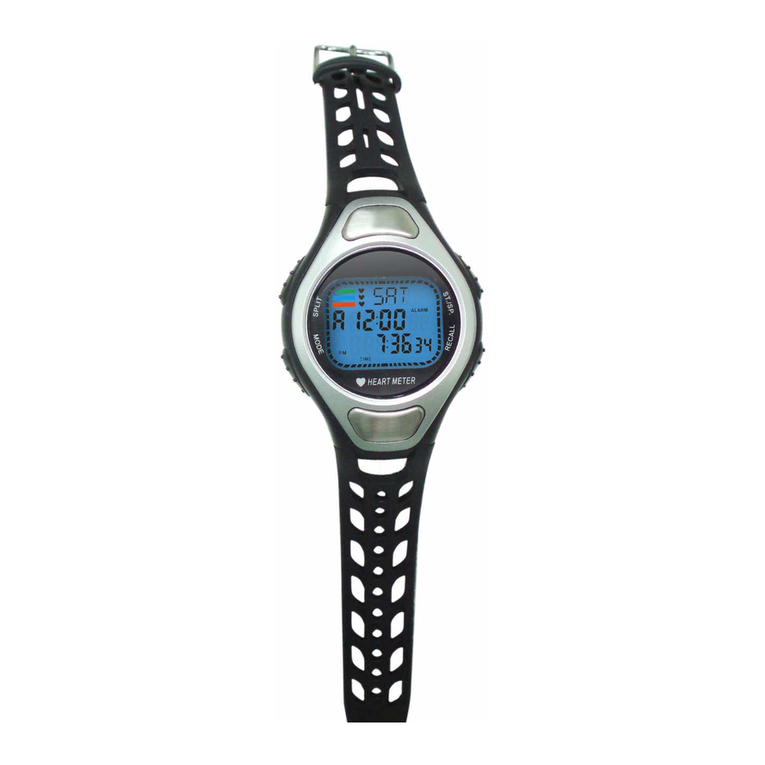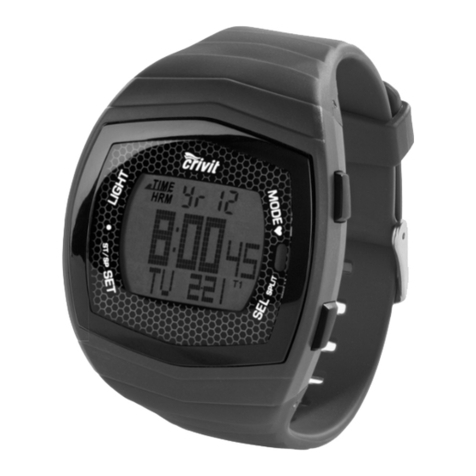LIMITED ONE
-
YEAR WARRANTY
POLAR warrants to the original
consumeripurchaserthat
the
product will be free from defects in material or workmanship
for one year from date of purchase with the exception of
battery and the elastic belt.
. Warranty does’not cover damages due to misuse, abuse,
or accidents, negligence of the precautions; improper
malntenanceor commercial use; cracked or broken cases.
. Warranty is voided if repairs are made by persons not
authorized by POLAR.
. This warranty gives the purchaser specific legal rights, and
the purchaser may also have other rights depending on
state law.
. The warranties contained heretn are expressly in lieu of
any other warranties, includmg ImplIed warranty of
merchantabilltly and/or fitness for purpose.
. During this warranty period (one year), the product will be
either repaired or replaced (at POLAR’s option) without
charge in the country where it was originally purchased.
DISCLAIMER
The material in this manual is for informational purposes only.
The product it describes is subject to change without notice.
POLAR Electra Oy makes no representations or warranties
with respect to this manual or with respect to the product
described hereln.
All nghts reserved. No part of this manual may be used or
reproduced in any form or by any means without prior written
permlssion of POLAR.
You have just purchased the essential equipment
for scientific training based on today’s most
advanced athletic concepts --the Polar Sport
Tester Heart Rate Monitor. Now, with the most
accurate, sophisticated performance monitor
available, you are ready to control your training to
reach your fullest competitive potential.
Modern athletic training, designed to eliminate
hit-or-miss activity and to optimize the time spent,
requires precise measurements. The Polar Sport
Tester is the preffered measuring technology used
by winning world-class International teams in
track and field, cross-country skiing, bicycling,
triathlon, swimming, and other events.
For today’s competitive athlete, a carefully
planned personal training program includes, of
course, measuring of time: intervals, intermediate
and lap times, etc. But added to these now are
critical measurements related to testing of
baseline physiological functions such as:
l Heart rate
l Efficiency in oxygen use (maximal aerobic
capacity
-
V02 max)
l Accumulation of lactic acid (anaerobic
threshold
-
AT)
When these internal stresses are accurately
measured, areas for improvement can be
identified and this allows for a planned approach
to ovecroming weaknesses through controlled
uses of intensity, duration and frequency in
training. For modern interval training, stress levels
(work intensity) and recovery levels can be
predetermined so you can reach your peak in time
for competition, and avoid injury through
overstress.
2
